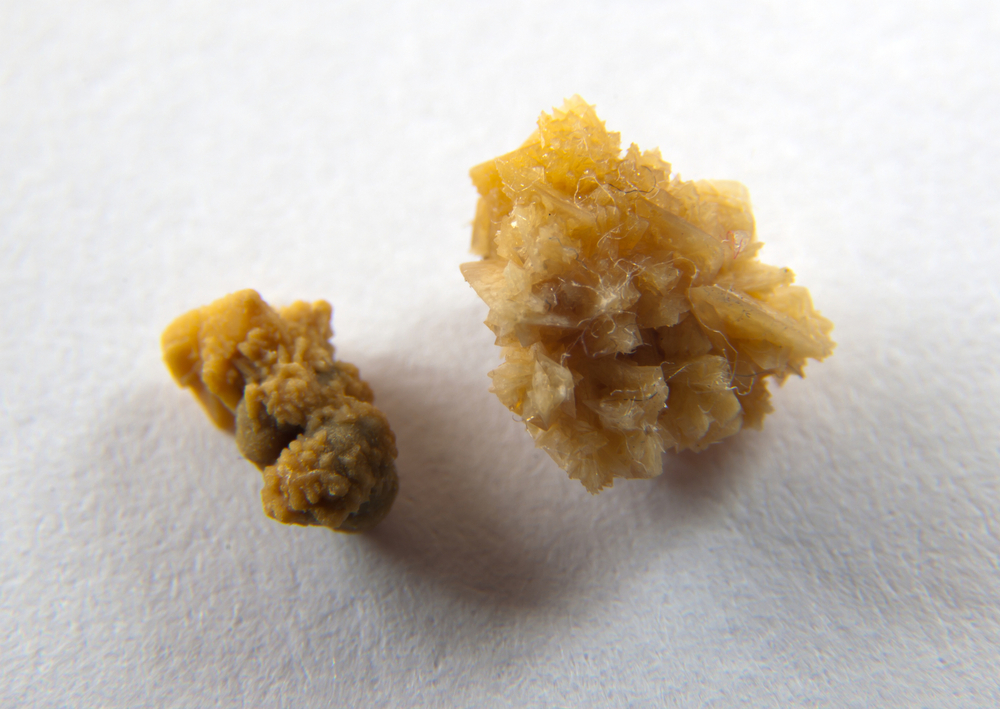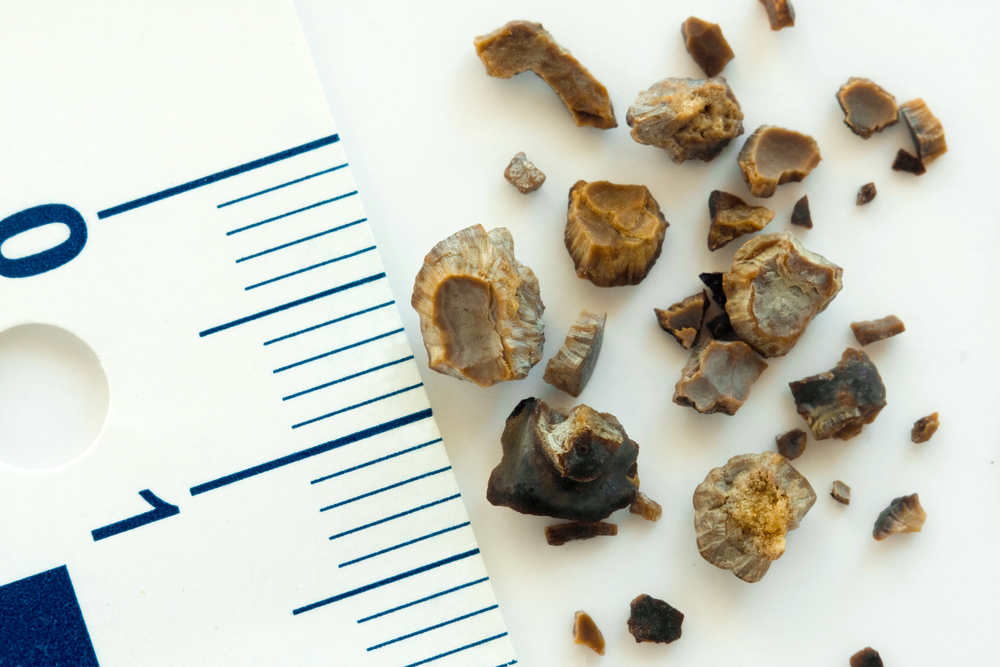Kidney Stones: Causes, Symptoms & Treatment

A kidney stone is a hard mass that forms in one or both kidneys from minerals in the urine, and if large enough, can cause severe pain. In the United States, kidney stones send more than 500,000 people to the emergency room each year, according to the National Kidney Foundation.
Causes
Kidney stones form when there is not enough liquid in the urine to dilute out waste chemicals, such as calcium, oxalate and phosphorous. These waste chemicals become concentrated, and crystals begin to form, according to the National Kidney Foundation.
The most common type of kidney stones are calcium oxalate stones.
Kidney stones can vary in size, with some as small as a grain of sand, and others as large as a pea or even a golf ball, according to the National Institutes of Health (NIH).
Small stones may pass down the urinary tract and be excreted without causing symptoms. Larger stones may get stuck in the urinary tract and block the flow of urine, which can cause severe pain or bleeding, the NIH says.
Symptoms
People with kidney stones often seek medical care because they have severe pain in their flank (the area between the mid-back and the ribs) on one side of the body, and this pain can extend to the lower abdomen, said Dr. Michael F. Michelis, director of the division of nephrology at Lenox Hill Hospital in New York. "Stone pain is very profound," Michelis said.
Other symptoms of kidney stones can include pain while urinating, blood in the urine, and nausea and vomiting, according to the NIH. People who think they have a kidney stone, or who have serious symptoms such as extreme pain that won't go away, fever, chills and vomiting, should see their doctor, the NIH says.
Get the world’s most fascinating discoveries delivered straight to your inbox.
Risk factors
Men are more likely to develop kidney stones than women. People are also at increased risk for kidney stones if they've had a stone in the past, or a member of their family has had a stone.
Other risk factors include not drinking enough water, eating a diet high in protein, sodium and sugar, being obese, or undergoing gastric bypass surgery, according to the Mayo Clinic.
The most common time to develop kidney stones is between ages 20 and 60, according to information from The Johns Hopkins Hospital.
Diagnosis
Kidney stones can be diagnosed from a patient's symptoms and a CT scan (that combines X-rays to create a 3D image), which is usually performed in the emergency room, Michelis said.
Treatment
Small kidney stones don't usually need treatment, but an individual may need to take pain medication, according to the NIH. Patients with kidney stones should also drink lots of fluids, which can help the stone to pass. Most kidney stones do not require invasive treatment, according to the Mayo Clinic.
Large kidney stones, or stones blocking the urinary tract, may need other treatments. One treatment is called shock wave lithotripsy, during which a doctor uses a machine that produces strong vibrations known as shock waves to break the stone into small pieces so it can pass through the urinary tract.
Another treatment, called ureteroscopy, uses a special tool called a ureteroscope to view the kidney stone in the ureter — the tube that connects the kidneys to the bladder. A doctor can then remove the stone or use laser energy to break it up.
Very large stones may need surgery to remove them, Michelis said.
Prevention
Many issues of kidney stones "can be avoided by moderation of the diet and a high fluid intake," Michelis said. The NIH recommends drinking about 2 to 3 liters, or 2 to 3 quarts, of fluid each day.
Determining the type of stone a person had — by catching the stone as it passes and having it analyzed by a lab — can help doctors understand what caused the stone, and make recommendations to prevent the condition. If a patient is not able to catch the kidney stone, doctors can still perform urine testing (by asking a patient to collect his or her urine for a 24-hour period), and take a diet history, to determine what might be causing the stone, Michelis said.
For people who've had stones made of calcium oxalate, doctors may recommend that they avoid foods high in oxalate, such as spinach, rhubarb, nuts and wheat bran, the NIH says.
To prevent stones made of uric acid, doctors may ask patients to reduce their protein intake, because protein is associated with the formation of uric acid in the body, Michelis said.
Reducing salt intake may also lower a person's risk of several types of kidney stones, including calcium stones. Eating too much sodium can increase the amount of calcium in the urine, Michelis said. Patients should also eat the recommended daily amount of calcium, but not an excessive amount, Michelis said.
Some drugs can help prevent kidney stones, but these drugs are typically used only if a change in diet is not effective, Michelis said. These include diuretic drugs to prevent calcium stones and drugs to reduce the production of uric acid to prevent uric acid stones, Michelis said. Some drugs can also reduce the acidity of the urine, Michelis said, because too much acid in the urine is a risk factor for stones made of uric acid.
This article is for informational purposes only, and is not meant to offer medical advice.
Follow Rachael Rettner @RachaelRettner. Follow Live Science @livescience, Facebook & Google+.
Additional reporting by Cari Nierenberg, Live Science Contributor
Additional resources
- Read more information from the Mayo Clinic about risk factors for developing kidney stones.
- The National Kidney Foundation answers the question "How common are kidney stones?" and others.
- The U.S. Department of Health and Human Services has an A-to-Z list of topics about kidney stones.

Rachael is a Live Science contributor, and was a former channel editor and senior writer for Live Science between 2010 and 2022. She has a master's degree in journalism from New York University's Science, Health and Environmental Reporting Program. She also holds a B.S. in molecular biology and an M.S. in biology from the University of California, San Diego. Her work has appeared in Scienceline, The Washington Post and Scientific American.



